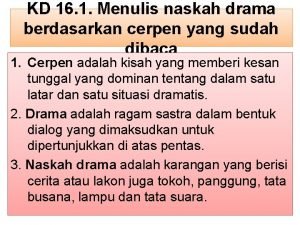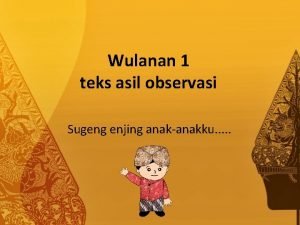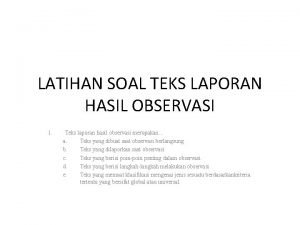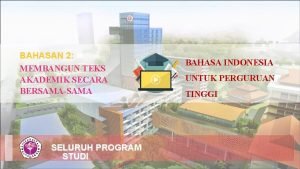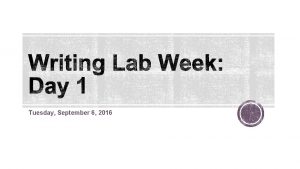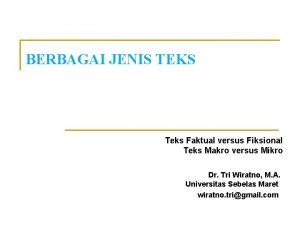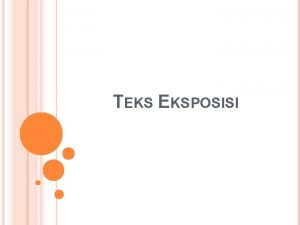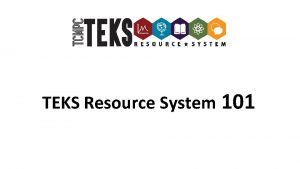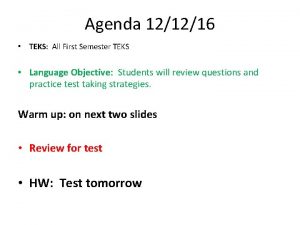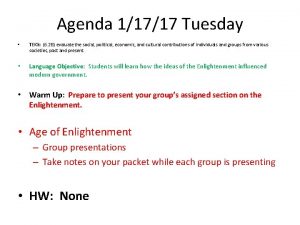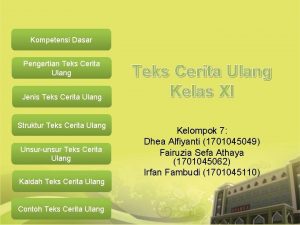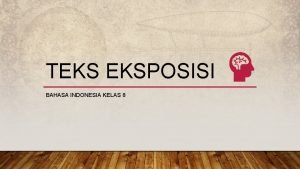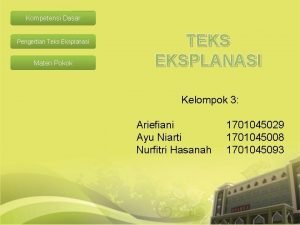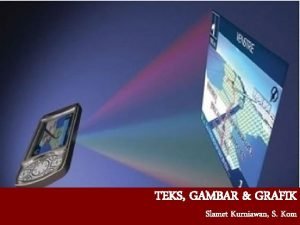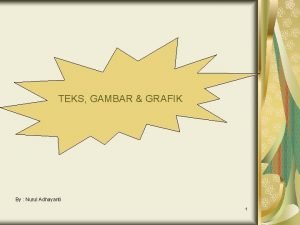Agenda Tuesday 9616 TEKS 4 Geography The student













































- Slides: 45

Agenda Tuesday 9/6/16 • TEKS: (4) Geography. The student understands the factors that influence the locations and characteristics of locations of various contemporary societies on maps and globes and uses latitude and longitude to determine absolute locations. The student is expected to: • (D) identify and locate major physical and human geographic features such as landforms, water bodies, and urban centers of various places and regions; Supporting Standard • Language Objective: Students must be able to identify and locate physical features such as landforms, bodies of water and urban centers of various places and regions. • Absolute Location Battleship • HW: Coordinates Exercise Worksheet due tomorrow!

Agenda Wednesday 9/7/16 • TEKS: (4) Geography. The student understands the factors that influence the locations and characteristics of locations of various contemporary societies on maps and globes and uses latitude and longitude to determine absolute locations. The student is expected to: • (D) identify and locate major physical and human geographic features such as landforms, water bodies, and urban centers of various places and regions; Supporting Standard • Language Objective: Students must be able to identify and locate physical features such as landforms, bodies of water and urban centers of various places and regions. • Turn in Coordinates Exercise Worksheet • A Spatial Way of Thinking (Sections 1 – 2) • Geoterms • HW: Complete Geoterms (Pages 2 & 3 Only) • Test Friday Sept 16 th

Types of Maps Political Map Physical Map Thematic Map



Agenda Thursday 9/8/16 • TEKS: (4) Geography. The student understands the factors that influence the locations and characteristics of locations of various contemporary societies on maps and globes and uses latitude and longitude to determine absolute locations. The student is expected to: • (D) identify and locate major physical and human geographic features such as landforms, water bodies, and urban centers of various places and regions; Supporting Standard • Language Objective: Students will understand how latitude, climate and elevation affect vegetation growth and population density. • Warm up: What water feature is used for transportation, agriculture and daily life? • Check Geoterms (Pages 2 & 3) • Read Sections 3 & 4 – A Spatial Way of Thinking • Earth’s Physical Features • Earth’s Climates (Hot, Cold, Wet, Dry) • Complete Pages 4 & 5 • HW: Test Thursday Sept 16 th









Agenda Friday 9/9/16 • TEKS: (4) Geography. The student understands the factors that influence the locations and characteristics of locations of various contemporary societies on maps and globes and uses latitude and longitude to determine absolute locations. The student is expected to: • (D) identify and locate major physical and human geographic features such as landforms, water bodies, and urban centers of various places and regions; Supporting Standard • Language Objective: Students will understand how natural resources affect a region’s economic activity and population patterns. • Read Sections 5 & 6 • Earth’s Vegetation • Population Density • A Spatial Way of Thinking – Complete Sections 5 & 6 • HW: Test Friday Sept 16 th

Monday 9/12/16 • Warm up: watch regions video (next slide). On your sheet- Define a REGION • A Spatial Way of Thinking – Sections 7 & 8 • Economic Activity: Land & Resources • Regions • Film – Geographical Features: Landforms • HW: Finish “A Spatial Way of Thinking” (if you have any missing sections) • Test Friday Sept 16 th

What is a region? • http: //www. youtube. com/watch? v=ch. UU-0 Ov. OEU&noredirect=1













• Physical Process: Erosion Glaciations Tectonic Movement Volcanic Activity


How Tectonic Movement Shapes Earth In 1906, a terrifying earthquake shook San Francisco, California. “Trolley lines snapped like threads” and buildings “crumbled like card houses, ” wrote one eyewitness. “The cobblestones danced like corn in a popper. ” No one at that time understood how or why earthquakes happen. Today we know that they are caused by tectonic movement. The Continents and Oceans Rest on Plates Scientists solved the mystery of earthquakes in the 1960 s. They discovered that the lithosphere is broken into huge pieces called tectonic plates. Earth’s lands and seas rest on these plates, which lie below the surface of our planet. The plates float like rafts on Earth’s liquid mantle. Tectonic plates move in three ways. 1. They can move away from each other. 2. They can move toward each other. 3 They can scrape sideways past each other. When two plates collide, one usually slides under the other. Tectonic plates are incredibly heavy. When they meet, friction can lock them into place for long periods. During this time, enormous pressure builds up below Earth’s crust. When the pressure gets too great, the plates come unstuck and move with tremendous energy. We feel this sudden movement as an earthquake.

A Crust of Moving Plates Earth’s solid crust is made up of tectonic plates. These plates float on the liquid rock that makes up the middle layer of Earth. There at least 14 plates, some very large in area, some smaller.

• Tectonic Movement- 3 minutes


Glaciations Process • 2 min video- Yellowstone


• Volcanic Activity- 3 minutes


• Erosion Video- 3 minutes




a physiographic feature is. • Physio means "physical, " graphic means "written down or recorded, " and feature means "a particular characteristic of something. " Thus, a physiographic feature is a physical characteristic of the land-a lake, a mountain, a river, a desert--that is recorded on a map.

• TED Blog • 13 October 2010 • Haiti’s disaster of engineering: Peter Haas on TED. com
 Agenda sistemica y agenda institucional
Agenda sistemica y agenda institucional Student council agenda
Student council agenda Ubahlah kutipan cerpen berikut menjadi naskah drama
Ubahlah kutipan cerpen berikut menjadi naskah drama Apa isine pembuka teks palapuran
Apa isine pembuka teks palapuran Tujuan utama merevisi teks hasil observasi adalah.
Tujuan utama merevisi teks hasil observasi adalah. Pertanyaan tentang membangun teks akademik secara mandiri
Pertanyaan tentang membangun teks akademik secara mandiri Ap human geography frq examples
Ap human geography frq examples 5 themes of geography ap human geography
5 themes of geography ap human geography Proruption ap human geography
Proruption ap human geography What did you do last weekend conversation
What did you do last weekend conversation What did you do in london last weekend
What did you do in london last weekend National clearinghouse student tracker
National clearinghouse student tracker Class maths student student1 class student string name
Class maths student student1 class student string name National student clearinghouse student tracker
National student clearinghouse student tracker Https://student.freckle.com/#/login
Https://student.freckle.com/#/login Teacher good morning
Teacher good morning Sls helpdesk
Sls helpdesk Hát kết hợp bộ gõ cơ thể
Hát kết hợp bộ gõ cơ thể Slidetodoc
Slidetodoc Bổ thể
Bổ thể Tỉ lệ cơ thể trẻ em
Tỉ lệ cơ thể trẻ em Voi kéo gỗ như thế nào
Voi kéo gỗ như thế nào Tư thế worms-breton
Tư thế worms-breton Hát lên người ơi alleluia
Hát lên người ơi alleluia Các môn thể thao bắt đầu bằng từ đua
Các môn thể thao bắt đầu bằng từ đua Thế nào là hệ số cao nhất
Thế nào là hệ số cao nhất Các châu lục và đại dương trên thế giới
Các châu lục và đại dương trên thế giới Cong thức tính động năng
Cong thức tính động năng Trời xanh đây là của chúng ta thể thơ
Trời xanh đây là của chúng ta thể thơ Mật thư anh em như thể tay chân
Mật thư anh em như thể tay chân Làm thế nào để 102-1=99
Làm thế nào để 102-1=99 độ dài liên kết
độ dài liên kết Các châu lục và đại dương trên thế giới
Các châu lục và đại dương trên thế giới Thể thơ truyền thống
Thể thơ truyền thống Quá trình desamine hóa có thể tạo ra
Quá trình desamine hóa có thể tạo ra Một số thể thơ truyền thống
Một số thể thơ truyền thống Bàn tay mà dây bẩn
Bàn tay mà dây bẩn Vẽ hình chiếu vuông góc của vật thể sau
Vẽ hình chiếu vuông góc của vật thể sau Biện pháp chống mỏi cơ
Biện pháp chống mỏi cơ đặc điểm cơ thể của người tối cổ
đặc điểm cơ thể của người tối cổ V cc cc
V cc cc Vẽ hình chiếu đứng bằng cạnh của vật thể
Vẽ hình chiếu đứng bằng cạnh của vật thể Phối cảnh
Phối cảnh Thẻ vin
Thẻ vin đại từ thay thế
đại từ thay thế điện thế nghỉ
điện thế nghỉ


